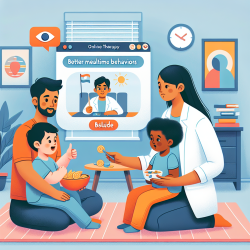As a practitioner dedicated to improving outcomes for children, staying informed about the latest advancements in mental health assessment tools is essential. One groundbreaking study, titled A Feasibility Study Using a Machine Learning Suicide Risk Prediction Model Based on Open-Ended Interview Language in Adolescent Therapy Sessions, explores the potential of machine learning (ML) and natural language processing (NLP) in predicting suicide risk among adolescents. This blog aims to illustrate how the findings from this research can be implemented in practice and encourage further exploration in this innovative field.
The Rising Need for Innovative Risk Assessment
Suicide rates among adolescents have been steadily increasing, making it the second leading cause of death among individuals aged 10-34. Traditional risk assessment tools, such as the Patient Health Questionnaire 9 (PHQ-9) and the Columbia Suicide Severity Rating Scale (C-SSRS), often rely on subjective responses and the rater's intuition, which can be problematic, especially for youth. The dynamic and fluid nature of suicidality calls for more objective and adaptive approaches.
How Machine Learning Enhances Risk Prediction
The study conducted by Cohen et al. (2020) demonstrates that ML models can effectively classify suicidal individuals based on their speech patterns. By analyzing linguistic and acoustic markers in speech, these models can identify neurophysiological changes associated with mental health conditions. The study tested several ML models, including support vector machines (SVM), logistic regression (LR), and extreme gradient boosting (XGB), and found that these models could classify language samples with good discrimination ability (AUC: 0.75-0.78).
Implementing ML Models in Therapy Sessions
Incorporating ML and NLP into therapy sessions can provide mental health professionals (MHPs) with a new perspective on assessing suicide risk. Here are some practical steps to integrate this technology into your practice:
- Utilize Voice Collection Technology: Employ a smartphone app to record therapy sessions, capturing language samples that can be analyzed for suicide risk.
- Incorporate Standardized Probes: Use semi-structured interviews, like the MHSAFE probes, to elicit emotional responses from clients. These probes can reveal critical linguistic markers indicative of suicide risk.
- Combine Data Sources: Integrate language analysis with standardized scales (e.g., PHQ-9, C-SSRS) and clinical impressions to create a comprehensive risk assessment.
- Monitor and Adjust: Regularly review and adjust your assessment techniques based on feedback and outcomes, ensuring that the technology complements your clinical judgment.
Encouraging Further Research
The potential of ML and NLP in mental health is vast, and ongoing research is crucial. Practitioners are encouraged to stay informed about the latest studies and consider participating in research initiatives. Collaboration between researchers and clinicians can lead to the development of more refined and effective tools for suicide risk assessment.
To read the original research paper, please follow this link: A Feasibility Study Using a Machine Learning Suicide Risk Prediction Model Based on Open-Ended Interview Language in Adolescent Therapy Sessions.










